Purchase 500mg hydrea with mastercardTherefore medicine neurontin discount 500 mg hydrea mastercard, nearly the entire dynamics of cellular processes are fee dependent and depend upon a plethora of ionic mechanisms spa hair treatment purchase hydrea with a mastercard. These price dependencies have been extensively studied treatment concussion buy hydrea 500mg otc, usually in response to electrical stimulation pacing protocols treatment restless leg syndrome order hydrea cheap. Here I consider the generic mobile phenomena that outcome within the unstable responses (not 1: 1) that can happen when coronary heart rate will increase. Only in the past twenty years (much longer in Russia) has it turn out to be clear via concept and mathematics, in addition to by counter-examples in numerical experiments, that reentry can occur in tissue with homogeneous refractoriness. Rotors form on account of regional conduction block of an motion potential wave propagating inside the heart; this block can come up via static or practical heterogeneities (or a combination of both). I limit myself to the discussion of functional spatial heterogeneities in continuous homogeneous cardiac tissue, not as a result of I view static inhomogeneities as unimportant, however somewhat to enable (it is hoped) a transparent and targeted presentation of theoretical ideas. In many "reallife" situations, I believe that the underlying mechanisms are a variation on the themes offered in this chapter, although I even have no doubt that certain phenomena not discussed here. Any textual content on the speculation of rotors and arrhythmias will essentially be incomplete and biased; every subject in this chapter may function the idea for an prolonged treatise. First, an necessary disclaimer: I am not a mathematician; my understanding of the theory and pertinent literature that I current is terribly incomplete. I take a "dimensional" strategy and talk about theoretical ideas related to arrhythmias, starting with purely cellular characteristics and adopted by phenomena in a cable, sheet, slab, and entire coronary heart. Although rotors can type solely in twodimensional (2D) or three-dimensional (3D) tissue, cellular (0D) dynamics play an important function within the initiation and upkeep of cardiac arrhythmias. This essential mobile dynamic of a stimulus failing to generate an all-or-none action potential is the key to localized conduction block as described later in this chapter. Thus, combining Equation 2 with w = f w (V, U) offers the t basic FitzHugh-Nagumo equation. Reentry is possible in 1D as unidirectional wave propagation inside a ring whether it is of sufficient size. The circumstances for generating a nonlinear propagating wave in 1D are significantly extra difficult than these similar to the elicitation of an all-or-none action potential in 0D. A certain "liminal size" is required to generate sufficient inward current to overcome the downstream load (sink) and to provoke a propagating wave in a fully excitable cable. Unidirectional block is the hallmark of rotor formation (details below), so details of the stimulation, particularly, space affected, amplitude, and timing-called the weak window (or period)- are of specific importance. Theoretical outcomes regarding the nonlinear cable equation (Equation 1) are too quite a few to tackle here (see References 14 via 16 for excellent reviews). The effect of wave entrance curvature on propagation pace is well-known for small values of, and this effect is linear. The relationships of Rcrit to other size scales in cardiac tissue, most essential, the wavelength and the width of the wave entrance, are relevant to wave propagation in 2D. The wave will propagate as a plane wave exactly analogous to 1D initially, but crit = D 1 =. It is essential to notice that this phenomenon of wave detachment may give rise to the development of latest reentrant waves; many factors. In anatomical reentry, a wave is anchored to an obstacle and may be self-sustaining if the perimeter of the obstacle is larger than. As is well-known clinically, the dynamics of anatomical reentry could be simply disrupted. In 1946, Wiener and Rosenbleuth printed a quantitative description of wave propagation and reentry round obstacles in 2D and related their findings to cardiac arrhythmias. These postulates have been described as "a simplified form of the laws of excitation"34 and are as follows: (1) an impulse, as quickly as started, will unfold with constant velocity in all directions within the tissue; (2) the amplitude of the wave stays constant and exceeds the threshold of adjacent areas when these regions are within the resting state; (3) there are three states by which the tissue can exist-active (only on the infinitesimally small wave front), refractory (with fixed duration), and resting. In 1948, Selfridge relaxed the "theorem" of Wiener and Rosenbleuth, which claimed that a wave entrance should not have any free ends and should finish on a boundary or impediment. A comparable idea of 2D useful reentry, referred to as the "main circle" principle, was introduced by Allessie in 1977.
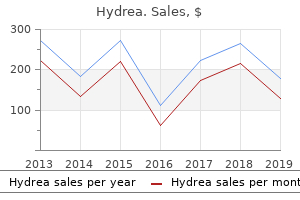
Buy hydrea 500mg amexThere is weak associations with stroke medicine journal buy generic hydrea 500mg on line, coronary coronary heart illness and cardiovascular mortality medicine omeprazole purchase hydrea 500mg fast delivery. Moderate retinopathy consists of delicate retinopathy with a quantity of of the following indicators: retinal haemorrhages (blot and dot or flame shaped) microaneurysms symptoms diarrhea cheap hydrea 500mg overnight delivery, cotton-wool spots medications in mothers milk cheap hydrea 500 mg online, and onerous exudates. There is strong association with stroke, congestive heart failure, renal dysfunction and cardiovascular mortality. Accelerated retinopathy consists of moderate retinopathy indicators plus optic disc swelling, could also be related to visible loss. Accelerated hypertensive retinopathy characterised by bilateral disk swelling which may occur in conjunction with severe hypertension needing pressing antihypertensive management. In such instances, physicians should goal for a small stepwise management of blood pressure over a few hours, and avoid a sudden Chapter 12 Etiopathogenesis Risk factors 1. Duration of diabetes is an important Diseases of Retina 277 figuring out factor. The risk of retinopathy in a toddler with onset of diabetes at the age of two years is negligible for the primary 10 years. Microangiopathy, affecting retinal pre-capillary arterioles, capillaries and venules, produced by hyperglycaemia is the essential pathology in diabetic retinopathy. Release of angiogenic elements can be mediated by hyperglycemia-induced oxidative stress, activation of protein kinase C and cytokines. Classification of Diabetic Retinopathy Diabetic retinopathy has been variously categorised. These are formed because of focal dilation (out pouching) of capillary wall following loss of pericytes. Both deep (dot and blot haemorrhages that are more common) and superficial haemorrhages (flame-shaped), happen from capillary leakage. These occur because of continual localised oedema and are composed of leaked lipoproteins and lipid crammed macrophages. Later on leads to formation of: � Fibrovascular epiretinal membrane formed because of condensation of connective tissue across the new vessels. Advanced diabetic eye illness if one of many following three criteria are present on slit-lamp examination with 90D lens: � Thickening of the retina at or within 500 micron of the centre of the fovea. It is marked by complications similar to: � Persistent vitreous haemorrhage, � Tractional retinal detachment, and � Neovascular glaucoma. Management Management of diabetic retinopathy contains its screening investigation and remedy. Screening for diabetic retinopathy characterised by microaneurysms, haemorrhages, well-circumscribed macular oedema and hard exudates that are often arranged in a circinate pattern. It is characterised by diffuse retinal oedema and thickening all through the posterior pole, with relatively few onerous exudates. To stop visual loss occurring from diabetic retinopathy a periodic follow-up is essential for a timely intervention. Not solely the blood glucose levels be in the normal range but other biochemical parameters should also be regular. In case these are deranged session from an internist/endocrinologist must be sought. Target blood glucose stage: fasting <120 mg%, post-prandial <180 mg%, and HbA1c (glycosylated haemoglobin) <7%. Patients ought to be counselled to prohibit smoking and alcohol consumption, and take regular exercises. However, danger of glaucoma, steroid induced cataract, and increased vulnerability to endophthalmitis limit its use. Laser burns are utilized outside the temporal arcades and on nasal facet one disc diameter from the disc upto the equator. Pathogenesis includes components like anoxia, venous stasis, angiospasm, elevated capillary permeability, and thrombocytopenia. Characteristc features of anaemic retinopathy are as under: � Fundus background turns into pale � Retinal arterioles are additionally pale � Retinal veins are tortuous and dilated � Retinal haemorrhages, superficial flame shaped and preretinal (subhyaloid) may be seen within the posterior half of fundus � Roth spots, i. Management consists of: Sickle-cell Retinopathy Retinal adjustments in sufferers suffering from sickle cell haemoglobinopathies (abnormal haemoglobins) are primarily caused by retinal hypoxia; which results from blockage of small blood vessels by the abnormal-shaped rigid purple blood cells. Clinical features Sickle-cell retinopathy can be divided into 5 selfexplanatory stages as follows: 1. Leukaemic Retinopathy Ocular involvement is more widespread with acute than continual leukaemia.
Diseases - Patterson pseudoleprechaunism syndrome
- Marfan syndrome
- Osteochondritis deformans juvenile
- Orotic aciduria purines-pyrimidines
- Trichorhinophalangeal syndrome type III
- Shprintzen syndrome
Buy hydrea 500mgKinking of Coronary Arteries the coronary arteries should be mobilized for a sufficient distance to stop any distortion medicine dispenser discount hydrea 500mg, rigidity symptoms 2 weeks after conception buy 500 mg hydrea with visa, or kinking when the aortic root is translocated medicine for sore throat purchase on line hydrea. Some surgeons prefer to detach one or both coronary arteries as buttons earlier than moving the aortic root medicine woman buy 500 mg hydrea overnight delivery. After the aorta is secured in its new location, the coronary buttons can be reattached to the identical positions on the aortic root. Alternatively, the harvest websites can be patched with autologous pericardium if it seems that reattachment at these areas will end in stretching or kinking of the coronary arteries. New implantation sites on the aortic root are then recognized, and openings, using care to not injure the aortic valve leaflets. The strategies involved in mobilizing and reanastomosing the coronary arteries are just like these used in the course of the arterial switch process (see Chapter 25). Coronary reimplantation is especially necessary if some aortic root rotation is required with positioning over the left ventricular outflow tract. B: the pulmonary annulus is incised carrying the incision through the conal septum into the ventricular septal defect. Aortic Insufficiency the aortic root should be carefully sutured to the pulmonary annulus and the ventricular septal patch to forestall valvar insufficiency. The anastomosis should preserve the geometry of the aortic annulus without distortion of any of the leaflets. The ascending aorta is transected, and a Lecompte maneuver is performed, bringing the pulmonary artery anterior to the aorta. The aortic root is reattached to the ascending aorta with a running 5-0 or 6-0 Prolene suture. Mobilization of Right and Left Pulmonary Arteries the proper and left pulmonary arteries must be utterly mobilized out to the pericardial reflection. This allows the pulmonary artery confluence to be positioned anterior to the aorta with none traction, which can stretch and slender the primary and/or one or both pulmonary arteries. Length of Ascending Aorta It is often essential to resect a short segment of the ascending aorta before anastomosing it to the aortic root. This prevents the aorta from bulging anteriorly when pressurized and compressing the posterior side of the pulmonary confluence. The aortic cross-clamp could be eliminated, and the right ventricular outflow tract reconstructed while rewarming is completed. To enlarge the main pulmonary artery, a vertical incision is made anteriorly and extended to the confluence. The posterior half of the principle pulmonary artery is sewn to the ventricular septal defect patch at the degree of the aortic suture line. A patch of glutaraldehydetreated autologous pericardium is then sutured to the remaining opening on the right ventricle inferiorly, and the pulmonary artery superiorly, to complete the reconstruction. Conduit from Right Ventricle to Pulmonary Artery Alternatively, a pulmonary homograft could also be interposed between the right ventricular opening and the enlarged main pulmonary artery (see Chapter 27). Again, the posterior side of the homograft must be rigorously sewn to the ventricular septal patch just on the aortic suture line to avoid harm to the aortic valve. Injury to the Aortic Valve When performing the posterior suture line connecting the primary pulmonary artery to the best ventricular outflow tract, care must be taken to not injure the aortic valve. By suturing on the septal patch material itself, just below the aortic suture line, this complication should be avoided. If using a conduit, typically the rightward facet of the proper ventriculotomy bordered by the translocated root can be closed with a triangle-shaped prosthetic patch in order to facilitate the proximal right ventricular to pulmonary artery conduit suture line. Therefore, the scientific findings are an anterior aorta that originates from the morphologic proper ventricle and a pulmonary artery that originates from the morphologic left ventricle. Other congenital defects can additionally be associated with transposition of the good arteries. Today, anatomic correction of transposition of the good arteries with or without ventricular septal defect is the procedure of selection.
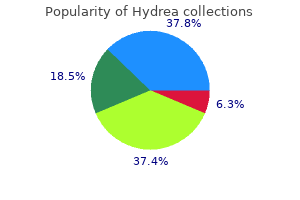
Order cheapest hydreaGlycerol-3-PhosphateDehydrogenase-likeProtein Mutations in the gene coding for Nav1 medicine zetia order genuine hydrea. These observations linking the redox state of the cells with the exercise of Nav1 medicine 2000 buy hydrea 500mg amex. The study of a transgenic mouse model overexpressing one mutant of desmoglein2 (p symptoms you may be pregnant purchase discount hydrea. These results are similar to medicine 72 purchase hydrea 500 mg with mastercard these seen with the plakophilin2 mutants (discussed earlier) and additional help a cross-talk mechanism between the desmosomal proteins and Nav1. Ankyrin-G is predominantly positioned on the intercalated discs, where it interacts with not solely Nav1. E1053K, in this motif was found in a BrS affected person and was proven to disrupt the interplay between Nav1. Most of the detailed molecular cellular mechanisms concerned within the regulation of Nav1. These associated proteins could work together at totally different life cycle levels of the Nav1. Among the most intriguing questions that stay to be answered are: (1) Where are the opposite pools of Nav1. This work was supported by Swiss National Science Foundation grant 310030B 135693 (to H. Conclusions and Perspectives this chapter summarizes the latest findings associated to the rapidly growing record of Nav1. Some of those proteins have been found as mutated in sufferers with genetic types of References 1. Desplantez T, McCain M, Beauchamp P, et al: Connexin 43 ablation in fetal atrial myocytes decreases electrical coupling, partner connexins and sodium present. Cerrone M, Noorman M, Lin X, et al: Sodium present deficit and arrhythmogenesis in a murine model of plakophilin-2 haploinsufficiency. Hicke L, Dunn R: Regulation of membrane protein transport by ubiquitin and ubiquitinbinding proteins. Kang L, Zheng M, Morishima M, et al: Bepridil up-regulates cardiac Na(+) channels as a longterm effect by blunting proteasome alerts through inhibition of calmodulin activity. Allouis M, Le Bouffant F, Wilders R, et al: 14-3-3 is a regulator of the cardiac voltage-gated sodium channel Nav1. Deschenes I, Neyroud N, DiSilvestre D, et al: Isoform-specific modulation of voltage-gated Na(+) channels by calmodulin. Faulkner G, Lanfranchi G, Valle G: Telethonin and different new proteins of the Z-disc of skeletal muscle. Hayashi T, Arimura T, Itoh-Satoh M, et al: Tcap gene mutations in hypertrophic cardiomyopathy and dilated cardiomyopathy. Furukawa T, Ono Y, Tsuchiya H, et al: Specific interplay of the potassium channel beta-subunit minK with the sarcomeric protein T-cap suggests a T-tubule-myofibril linking system. Ziane R, Huang H, Moghadaszadeh B, et al: Cell membrane expression of cardiac sodium channel Na(v)1. Gerull B, Heuser A, Wichter T, et al: Mutations within the desmosomal protein plakophilin-2 are frequent in arrhythmogenic proper ventricular cardiomyopathy. Pilichou K, Nava A, Basso C, et al: Mutations in desmoglein-2 gene are associated with arrhythmogenic right ventricular cardiomyopathy. Lemaillet G, Walker B, Lambert S: Identification of a conserved ankyrin-binding motif within the family of sodium channel alpha subunits. Albesa M, Ogrodnik J, Rougier J-S, et al: Regulation of the cardiac sodium channel Nav1. Growing evidence over the past decade has demonstrated that Ca2+ can regulate cardiac ion channels at many ranges. For example, Ca2+ can control channel transcription, biosynthesis, trafficking, or gating of mature channels on the sarcolemma.
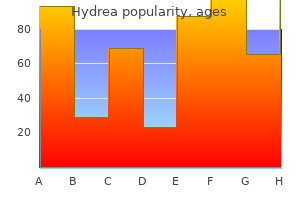
Hydrea 500mg low priceSuzuki A symptoms 11 dpo discount hydrea 500mg online, Yoshida M medications with sulfur purchase hydrea line, Ozawa E: Mammalian alpha 1- and beta 1-syntrophin bind to the choice splice-prone area of the dystrophin cooh terminus medicine 751 m generic hydrea 500 mg mastercard. Schuh K medications not to mix purchase hydrea from india, Uldrijan S, Telkamp M, et al: the plasmamembrane calmodulin-dependent calcium pump: A major regulator of nitric oxide synthase i. Garg V, Jiao J, Hu K: Regulation of atp-sensitive k+ channels by caveolin-enriched microdomains in cardiac myocytes. Okumura A, Nagai K, Okumura N: Interaction of alpha1-syntrophin with multiple isoforms of heterotrimeric g protein alpha subunits. The completion of the Human Genome Project and technical advances that permit for high-throughput sequencing have advanced the exploration for genetic signatures that affiliate with and, maybe, trigger illness states. Epigenetic phenomena regulate gene expression profiles by controlling genes in a binary manner such that genes are actively expressed. In addition, true epigenetic changes that happen as a result of a stimulus must be heritable and secure, even within the subsequent absence of that stimulus. By using genetic approaches, it was demonstrated that the spatial and temporal expression of the homeotic genes was enhanced by the Trithorax group of genes and repressed by the Polycomb group of genes in a segment-specific method. The creation of Dolly the sheep also revealed important features of epigenetic mechanisms. Although they had been ultimately successful, this strategy of nuclear switch was extraordinarily inefficient. This research supports the thought that, as cells differentiate, they accumulate secure and heritable adjustments in their nucleus that limit gene expression patterns and define identity. Basis of Epigenetic Phenomena the study of epigenetic phenomena presupposes that genes can be marked as transcriptionally "on" or "off" by modifications that are impartial of the first nucleotide coding sequence. The histone octamer consists of two molecules of every histone: H2A, H2B, H3, and H4. In addition to serving as packaging facilitators, 235 Historical Experiments That Illustrate the Salient Features of Epigenetics Early work in Drosophila species improvement revealed that the homeotic genes define section id and the place of appendages alongside the body axes. The amino terminal tails of histones protrude and are subjected to numerous covalent posttranslational modifications. Studies in mice have shown that Brg1 is important to normal coronary heart improvement and interacts with developmental cardiac transcription components. Histone Tail Modifications From an epigenetic standpoint, the 2 most necessary tail modifications are acetylation and methylation. In distinction, histone tail methylation may be associated with both euchromatin or heterochromatin, relying upon the extent of methylation (mono- [me], di- [me2], or tri- [me3] methylation) and the specific tail residues that are modified. For example, lysine (K) residues available for methylation include K4, K9, K27, and K36 of histone H3, and K20 of histone H4. Methylation of H3K9 and H3K27 is related to gene repression gene expression,sixteen whereas dimethyl (H3K4me2) and trimethyl (H3K4me3) marks at H3K4 are related to actively expressed genes. For instance, H3K27me3 marks (black line) are situated around the 5 regulatory region of silenced genes. In distinction, H3K4me3 marks are highly enriched at the 5 transcription start web site of actively expressed genes. Histone methylation marks and acetylation marks are imparted and eliminated by enzymes which would possibly be part of protein complexes. Histone acetyltransferases, acetylate histones, and histone deacetylases reverse this acetylation course of. Epigenetics in Induced Pluripotent Stem Cells and Direct Reprogramming Cells accumulate epigenetic marks that restrict their cell fates during growth. To harness the flexibility of transcription components to reprogram cells in a clinically related method, Ieda et al. They showed that direct reprogramming of fibroblasts resulted in the stable shift of the epigenetic signature of a quantity of cardiac genes-Actn2, Ryr2, and Tnnt2. Heart Muscle Development Successful improvement of the cardiovascular system requires a posh integration of a number of inputs that finally leads to secure gene expression profiles that decide the id of the differentiated cell.
Syndromes - Cancer
- Allow your child to practice the positions or movements that will be required for the procedure, such as the fetal position for a lumbar puncture.
- Avoid high-sugar snacks in between meals to allow children to become sufficiently hungry.
- Losing weight without trying
- Blood clots in the legs that may travel to the lungs
- Name of the product (ingredients and strengths, if known)
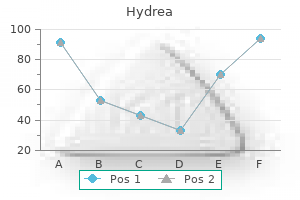
Cheap hydreaCarelessness throughout this step could cause unintended harm to the nasal mucosa and the nasal septum medications 4 less order hydrea online. Use: To shield the globe and help the lid during entropion medications vertigo purchase hydrea 500mg overnight delivery, ectropion medications prescribed for pain are termed generic 500 mg hydrea with amex, ptosis and other lid surgical procedures medicine names hydrea 500mg low price. These are a set of straight metal wires of various thickness (size 0�8) with blunt rounded ends and flattened central platform. It consists of a stout metallic handle, one end of which is longitudinally scooped. The article have to be doublewrapped and stored at 150� C for 1 hour or 180� C for 20 minutes. It consists of a small however stout rectangular blade with slightly convex surface and blunt edges attached to a deal with. Autoclaving at 134�C at 34 psi preserve for 3 minutes or 121�C beneath 15 lb/in2 strain for 20 min. This technique is appropriate for sterilizing varied devices, linen, glasswares, rubber goods, gowns, towels, gloves dressings and eyedrops. In autoclaving, sterilization happens because of the latent warmth which is given out when steam condenses to water. Therefore, to sterilize successfully the steam must come into direct contact with the surface to be sterilized. It is suitable for cryoextractor probes and ophthalmoscopy lenses and warmth sensitive instruments. They embrace the infrared rays which is used for rapid mass sterilisation of disposable syringes. It may be safely used for catheters, face-masks, anaesthetic tubes and metallic devices. It denatures the protein molecules by alkylation during which hydrogen atom is replaced by a hydroxyl ethyl radical with within the protein molecule. When a adequate number of proteins inside molecules of micro-organisms are alkylated, demise ensues. The course of kills all micro-organisms together with tubercular bacilli, different bacteria, spores and viruses. The gas is eliminated and the chamber and its contents are flushed with filtered air. Sterilization time might range from 1 to 12 hours depending upon the absorbency of the load, temperature and air exchange fee. Instruments ought to be stored in acetone for five minutes after which thoroughly washed with sterile water earlier than use. Ionising radiations: these include X-rays,gamma- room by exposure to the fumes of a vaporised disinfectant. For optimum disinfection, formaldehyde fumigation is recommended fornightly as a routine and on the finish of an working session of a grossly contaminated case. Method of fumigation involves following steps: � Cleaning and scrubbing of the operating room is completed thoroughly. Alternatively, 500 ml of 40% formaldehyde in a single liter of water is put into an electrical boiler or in a large bowl placed on a electrical sizzling plate with security cut-out when dry on boiling. One liter of ammonium resolution plus one liter of water is required to neutralize each liter of 40% formaldehyde used. Subsequently, the room doorways could also be opened for a brief period or the air-conditioning be switched on to exchange the formalin with air. They are Topical ocular anaesthesia is achieved by instillation of 2 to 4% xylocaine or 1% amethocaine, 4 times every four minute. Chapter 26 Indications Ophthalmic Instruments and Operative Ophthalmology 605 � For minor procedures like removal of corneal overseas body, removing of stitches, and so forth. Phacoemulsification is a way of extracapsular cataract extraction by which after the removal of anterior capsule (by capsulorhexis), the lens nucleus is emulsified and aspirated with the probe of a phacoemulsification machine. Therefore, sutureless surgical procedure is possible with a self-sealing scleral tunnel incision.
Purchase hydrea 500 mg lineAlthough the basket has suboptimal resolution medicine 369 discount 500 mg hydrea with amex, the theoretical design issues above and the size of single-ablation lesions (5 to 7-mm diameter) could restrict the necessity for considerably greater decision acne natural treatment generic hydrea 500mg with visa. Third symptoms 3 days past ovulation cheap hydrea 500 mg, a randomized controlled trial with a larger representation of female topics is required and is already beneath way treatment zenkers diverticulum order hydrea 500mg without a prescription. Endorsed by the governing bodies of the American College of Cardiology Foundation, the American Heart Association, the European Cardiac Arrhythmia Society, the European Heart Rhythm Association, the Society of Thoracic Surgeons, the Asia Pacific Heart Rhythm Society, and the Heart Rhythm Society. Vaquero M, Calvo D, Jalife J: Cardiac fibrillation: From ion channels to rotors within the human heart. Haissaguerre M, Sanders P, Hocini M, et al: Catheter ablation of long-lasting persistent atrial fibrillation: Critical constructions for termination. Gong Y, Xie F, Stein K, et al: Mechanism underlying initiation of paroxysmal atrial flutter/atrial fibrillation by ectopic foci: A simulation examine. Lalani G, Schricker A, Gibson M, et al: Dynamic conduction slowing precedes human atrial fibrillation initiation: Insights from bi-atrial basket mapping on transitions to atrial fibrillation. Konings K, Kirchhof C, Smeets J, et al: Highdensity mapping of electrically induced atrial fibrillation in people. Atienza F, Almendral J, Moreno J, et al: Activation of inward rectifier potassium channels accelerates atrial fibrillation in people: Evidence for a reentrant mechanism. Gerstenfeld E, Sahakian A, Swiryn S: Evidence for transient linking of atrial excitation throughout atrial fibrillation in people. Nademanee K, McKenzie J, Kosar E, et al: A new approach for catheter ablation of atrial fibrillation: Mapping of the electrophysiologic substrate. Hocini M, Nault I, Wright M, et al: Disparate evolution of right and left atrial price during ablation of long-lasting persistent atrial fibrillation. Summary of the current concepts of the mechanisms of atrial flutter and atrial fibrillation. Baher A, Qu Z, Hayatdavoudi A, et al: Short-term cardiac reminiscence and mom rotor fibrillation. Rensma P, Allessie M, Lammers W, et al: Length of excitation wave and susceptibility to reentrant atrial arrhythmias in normal aware canines. Fenton F, Karma A: Vortex dynamics in threedimensional continuous myocardium with fiber rotation: Filament instability and fibrillation. Notably Busquet et al proposed one other classification scheme by which right atrial branches are classified on the idea of cross-sectional diameter into two somewhat than three groups-the major and accent branches. Similar to proper atrial circulation, left atrial branches are usually categorised into the left anterior, intermediate/marginal, and posterior atrial branches. Our group carried out an investigation in isolated ovine hearts to tackle this question. This additionally signifies that superior coronary artery illness may affiliate with atrial infarctions involving variable regions of the atria. However, obtainable literature signifies that oxygen may diffuse to only a few layers of myocytes. Finally, reentrant circuits anchored on the infarction border zone had been visualized with optical mapping techniques. Also, the ionic mechanisms and intracellular pathways concerned in acute versus continual atrial ischemia stay to be clarified. Besides, currents which might be identified to be critical for ventricular infarction�related arrhythmias might play a distinct role in the atrial response to ischemia. As an instance, it was lately proven that interposition of the circumflex artery between the mitral isthmus and the coronary sinus is related to a lower likelihood of attaining complete mitral isthmus block. Genovesi S, Pogliani D: Prevalence of atrial fibrillation and associated factors in a inhabitants of long-term hemodialysis sufferers. Roy D, Talajic M, Dubuc M, et al: Atrial fibrillation and congestive coronary heart failure. Kochiadakis G, Skalidis E, Kalebubas M, et al: Effect of acute atrial fibrillation on phasic coronary blood move pattern and move reserve in humans. Lammers W, Kirchhof C, Bonke F, et al: Vulnerability of rabbit atrium to reentry by hypoxia: Role of inhomogeneity in conduction and wavelength. Sinno H, Derakhchan K, Libersan D, et al: Atrial ischemia promotes atrial fibrillation in dogs. Sakabe M, Shiroshita-Takeshita A, Maguy A, et al: Effects of a heat shock protein inducer on the atrial fibrillation substrate attributable to acute atrial ischaemia. Kawada H, Niwano S, Niwano H, et al: Tumor necrosis factor-alpha downregulates the voltage gated outward K+ current in cultured neonatal rat cardiomyocytes: A attainable reason for electrical remodeling in diseased hearts.
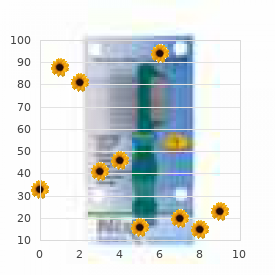
Buy hydrea 500mg without prescriptionThe aorta is then transected at this stage treatment narcolepsy hydrea 500 mg cheap, and traction sutures are positioned just above the three commissures of the aortic valve and tagged symptoms of kidney stones purchase genuine hydrea online. The pulmonary artery is transected at the degree of the takeoff of the right pulmonary artery treatment centers for drug addiction hydrea 500 mg on line, and traction sutures are placed on the commissures and tagged medicine 2 hydrea 500 mg without a prescription. The pulmonary valve is inspected to rule out significant abnormalities because this would be the new aortic valve. Note the divided ductus arteriosus and line of transection on the main pulmonary artery. Pulmonary Valve Abnormalities the standing of the pulmonary valve is usually defined by the preoperative transthoracic echocardiogram and intraoperative transesophageal echocardiogram. A sufficiently competent and nonstenotic valve should be confirmed earlier than excising the coronary arteries. Division of the Aorta It can be helpful to divide the aorta slightly above the midpoint so as to procure extra ascending aorta (neopulmonary root) and thereby cut back pressure on the Lecompte. The pulmonary artery confluence is brought anterior to the distal ascending aorta. The most proximal portion of the transected distal aorta is then grasped with a forceps or straight vascular clamp. This method, referred to because the Lecompte maneuver after the surgeon who originally described it, avoids the necessity for an interposition conduit to join the brand new pulmonary artery base to the pulmonary artery confluence. Distorting the Distal Ascending Aorta When repositioning the aortic cross-clamp, care should be taken not to twist the aorta and create torsion on the aortic suture line. Excision of the Coronary Ostia the coronary ostia and at least 2 to 3 mm of surrounding aortic wall are excised as tongues of tissue. The proximal coronary arteries are mobilized from the epicardium for several millimeters utilizing an electrocautery on low current. Kinking of Coronary Arteries Adequate dissection of the coronary arteries should be carried out to allow successful translocation of every coronary ostium to the corresponding sinus of the pulmonary artery. Insufficient mobilization could lead to pressure on the coronary anastomosis or kinking of the coronary artery. Mobilization of the Right Coronary Artery Conal branches may not often need to be ligated and divided to permit sufficient mobilization of the proper coronary artery. Juxtacommissural Ostia When one or each coronary ostia come up immediately adjoining to the commissure, the adjoining commissure must be excised along with the coronary ostia. Intramural Coronary Artery A generous cuff of aortic wall must be included in the tongue of tissue containing the coronary ostium to keep away from injury to the intramural portion of the coronary artery. Coronary Artery Reimplantation the reimplantation websites for the coronary ostia are determined by holding the mobilized coronary arteries up against the anterior facing sinuses of the pulmonary root, guaranteeing that no distortion of the proximal course of the coronary arteries is created. The coronary arteries could be reimplanted into the pulmonary root as tongues of tissue by making a U-shaped incision within the appropriate location. In this case, a small slit is made on the applicable location for coronary reimplantation in the pulmonary root. The coronary artery is sutured to the opening in the pulmonary root using 7-0 or 8-0 Prolene suture. After every coronary anastomosis, cold blood cardioplegic solution is infused instantly into every coronary ostium with a 2-mm olive-tipped cannula, allowing assessment of any kinking or distortion of the coronary artery. If any problems are detected, they want to be rectified now by either freeing up any restrictive adventitial or epicardial bands or redoing the anastomosis. Coronary Implantation Many surgeons favor creating the incisions for coronary implantation with the aortic root filled. To achieve this, the Lecompte maneuver is performed, and the neoaorta is anastomosed with marking sutures positioned on the surface exactly at the site of the three commissures. The cross-clamp can either be eliminated, or a cardioplegia catheter positioned and the basis stuffed to reveal the orientation and extent of the root previous to choosing websites for coronary implantation. The incision into the foundation is completed with the root totally distended to cut back the prospect of harm to the neoaortic valve. The "X" marks the location of the top of the commissure, and is marked on the skin of the neoaorta with a marking suture. Torsion of the Coronary Artery Some surgeons favor to excise the coronary ostia as buttons, as a substitute of tongues of tissue from the aortic root.
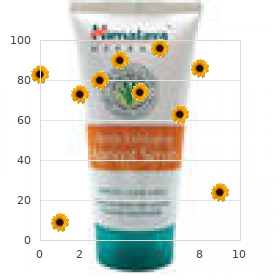
Generic hydrea 500mg visaClinical features of concomitant strabismus (in general) Depending upon the clinico-etiological options convergent concomitant squint may be additional categorised into following types: 1 denivit intensive treatment cheap hydrea 500 mg without a prescription. Infantile esotropia medications known to cause pancreatitis buy hydrea 500 mg free shipping, previously called the cardinal options of various clinico-etiological types of concomitant strabismus are described separately treatment urticaria hydrea 500mg low price. However treatment high blood pressure discount hydrea master card, the scientific features of concomitant strabismus (in general) are as under: 1. Characteristics of ocular deviation are: � Unilateral (monocular squint) or alternating (alternate squint). Amblyopia develops in monocular strabismus solely and is responsible for poor visual acuity. When A-V patterns are related, the horizontal concomitant strabismus turns into vertically incomitant (see page 357). Types of concomitant squint as congenital esotropia, is characterised by following features. Surgery ought to be done between 6 months to 2 years (preferably earlier than 1 yr of age). Acquired Non-accommodative esotropias 349 It happens due to overaction of convergence related to accommodation reflex. Accommodative esotropia is the most common type of squint in children (previously it was believed that congenital esotropia was most common). Refractive accommodative esotropia: It often develops on the age of 2 to three years and is associated with excessive hypermetropia (+4 to +7 D). Esotropia is larger for near than that for distance (minimal or no deviation for distance). Essential acquired or late onset esotropia, acute concomitant esotropia, cyclic esotropia, nystagmus blockage syndrome, esotropia in myopia and microtropia. It sometimes occurs during first few years of life any time after six months of age. Treatment contains early surgery after correction of the associated refractive error and amblyopia. Sensory esotropia It results from monocular lesions (in childhood) which both forestall the development of regular binocular imaginative and prescient or intervene with its upkeep. Examples of such lesions are: cataract, extreme congenital ptosis, aphakia, anisometropia, optic atrophy, retinoblastoma, central chorioretinits, and so on. Clinico-etiological types It can be classified into following clinico-etiological sorts: 1. It is the most typical sort of exodeviation with following options: � Age of onset is normally early between 2 to 5 years. These could additionally be irregular in � Sensory testing usually reveals good fusion, stereopsis and no amblyopia. If not treated in time the intermittent exotropia could decompensate to turn into fixed exotropia. Primary exotropia may be of following three varieties: � Convergence insufficiency type of exotropia is bigger for near than distance, � Divergence excess type of exotropia is larger for distance than near, or � Basic non-specific kind exotropia is equal for near and distance. Secondary (sensory deprivation) exotropia sufferers with secondary deviations as a end result of illnesses of retina and optic nerve. It is most important, as a end result of a refractive error could also be responsible for the symptoms of the patient or for the deviation itself. Cover tests It is a continuing unilateral deviation which results from long-standing monocular lesions (in adults), related to low vision within the affected eye. Common causes include: traumatic cataract, corneal opacity, optic atrophy, anisometropic amblyopia, retinal detachment and natural macular lesions. Consecutive exotropia It is a constant unilateral exotropia which ends either due to surgical overcorrection of esotropia, or spontaneous conversion of small diploma esotropia with amblyopia into exotropia. In the presence of squint, the uncovered eye will move in other way to take fixation, while in obvious squint there might be no movement. It reveals whether or not the squint is unilateral or alternate and in addition differentiates concomitant squint from paralytic squint (where secondary deviation is bigger than primary). In it the patient is requested to fixate at level divergent) is apparent on inspection. Roughly, the angle of squint is 15� and 45� when the corneal mild reflex falls on the border of pupil and limbus, respectively.
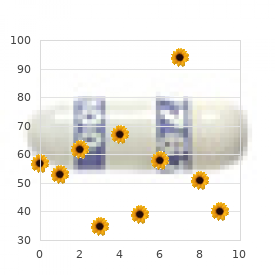
Cheap 500 mg hydrea amexActivationMapping Activation mapping includes the sequential movement of a number of single or multielectrode catheters throughout the chamber of curiosity to identify the activation sample of the arrhythmia treatment urinary tract infection buy hydrea overnight delivery. Because mapping is performed in the course of the goal arrhythmia treatment zenker diverticulum buy discount hydrea on line, this approach is most applicable for sustained arrhythmias symptoms your dog has worms cheap 500 mg hydrea, and fewer so for transient or unsustained rhythms medications xyzal generic hydrea 500 mg amex. This can be related as a end result of the constrained areas are usually better sites to target for ablation. During normal catheter mapping of an arrhythmia, the pressure from the catheter may cause transient tissue dysfunction that, if applied at a critical site, can terminate the tachycardia. Accordingly, one can capitalize on this phenomenon and use an strategy of "bump" mapping, throughout which the catheter is used to apply stress to various places along the tricuspid valve such that when conduction is transiently interrupted, ablation is carried out to eliminate the putative pathway. One downside with this method is the unpredictability of the time before conduction resumes. Cryomapping is another strategy that can provide transient arrhythmia interruption, but in a more predictably reversible method. Cryomapping is especially helpful when the goal arrhythmia is within close spatial proximity to a crucial normal construction, corresponding to throughout catheter ablation of a paraHisian accent pathway. Beneath the fluoroscopy desk is an electromagnetic location pad that emits a low-intensity sequence of magnetic fields and permits the system to precisely localize, record, and display in real time the place of the sensors, and hence the mapping catheter tip, in three dimensions (x, y, and z) in addition to orientation (roll, pitch, and yaw). The system additionally has the power to use either a gated or nongated electrical reference. This system can additionally be able to tracking a quantity of mapping catheters by a hybrid of magnetic location know-how and "current-based" impedance knowledge that permits real-time tip and curve identification and monitoring (termed superior catheter location). In this method, a magnetically tracked mapping catheter is maneuvered within the cardiac chamber while concurrently emitting a low-level current, to enable the system to characterize impedance data within the chamber. Subsequently, any commonplace multielectrode catheter related to the system may be localized with the chamber, albeit not necessarily with the identical submillimeter degree of spatial decision attainable with magnetic localization. Although the system requires the use of Biosense Webster electrode catheters, anatomic reconstruction can be facilitated, especially in the left atrium with the use of multielectrode circular mapping catheters. To track respiration, the system makes use of impedance readings derived from inter-patch measurements, termed respiration indicators. The inter-patch current (from one patch to the other) passes by way of the lungs, thereby recording adjustments in impedance owing to pulmonary air quantity. For the algorithm to provide good respiratory gating efficiency, one first performs a "coaching" step by which the mapping catheter is positioned in the heart, touching a chamber wall for recording heart motion during respiration. Second, by roving the mapping catheters, 3D renderings of assorted cardiac chambers can be created. Third, these methods enable one to highlight sure essential electrophysiological phenomena with various tags, corresponding to the situation of the His bundle or the response to entrainment maneuvers at different websites. Finally, the systems enable one to catalogue the areas of ablation lesions which are placed. Although coaching is sampled in one location, it remains valid for the complete coronary heart as a result of the coaching is used solely to enable the algorithm to understand the time level within the respiratory cycle. Using a decrease respiratory threshold permits more gating and leads to extra correct maps; nevertheless, this comes at the expense of time. When the respiratory threshold is about low, information accuracy is high; when the brink is greater, information addition to the map is faster, but map accuracy is compromised. These electrodes may be displayed simultaneously in isolation or relative to the reconstructed 3D chambers. First, by moving a catheter to trace the endocardial contour of the chamber of interest, a virtual 3D geometry is constructed. Subsequently, sequential point-by-point mapping can be performed to generate color-coded maps of electrical information corresponding to activation, voltage amplitude, and propagation. Over time, the flexibility of the system to perform these two steps has improved tremendously. First, the multielectrode catheter is maneuvered with a deflectable sheath along the chamber to create a high-density map-approximately 500 factors in less than 10 minutes.
References:
|



